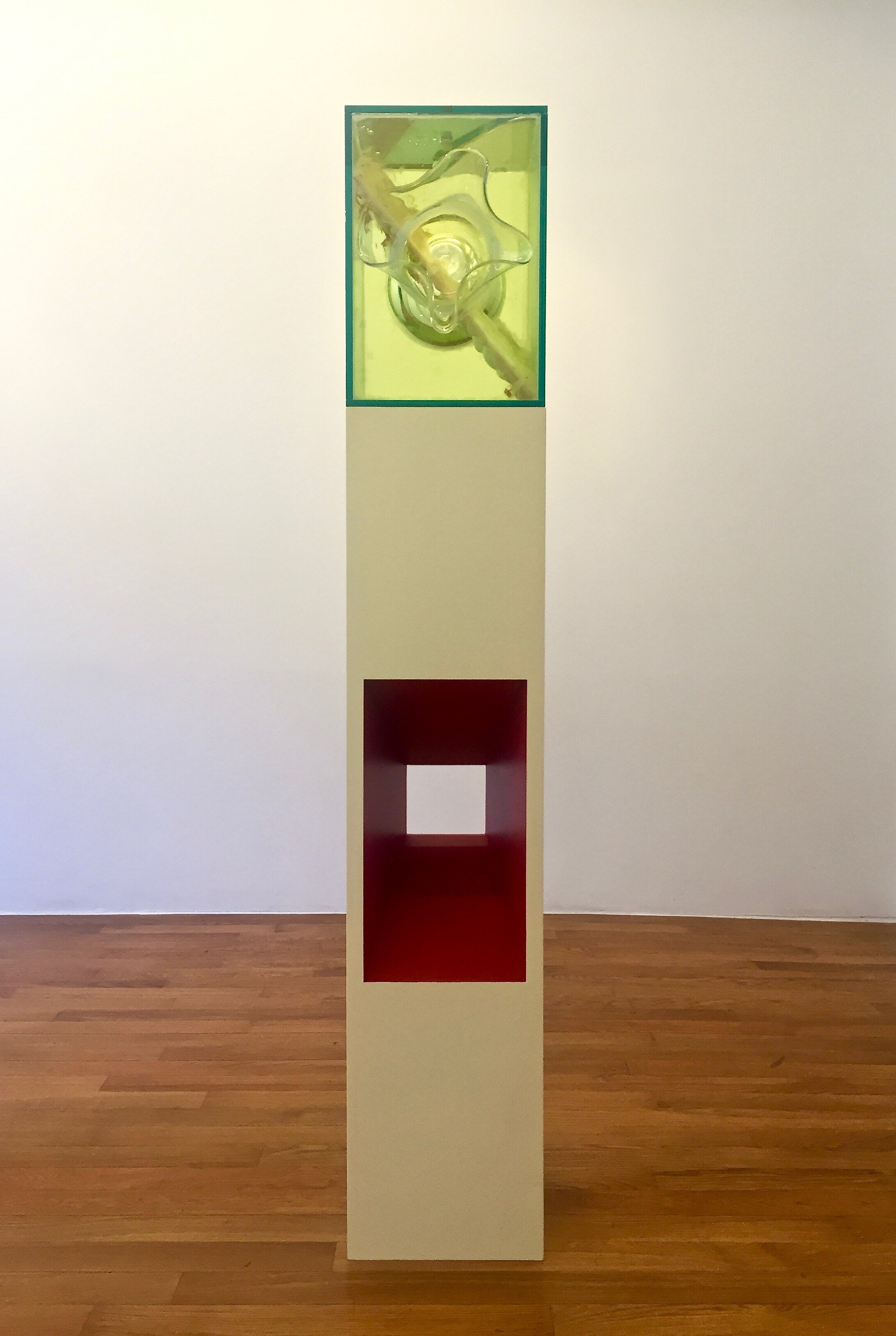JENNIFER SIREY
While experimenting with process and technique, I try to push materials out of context to reveal a rawness. It's a collaboration where I meticulously set parameters so that a substance can behave naturally, exhibiting its attributes. Bacteria is grown in a vessel, like a ship in a bottle, and wax is poured on water, similarly casting onto monofilament rings, setting, and freezing - an event that I eventually have no control over.
The sculptures literally grow into themselves. A glass tank is constructed, often integrating drilled holes and blown glass or found-object intrusions. It is filled to a predetermined level with a mixture of mother culture and wine or sake, then tilted until the surface level takes on a geometric shape, intersecting with loops inside the glass. “The mother” or acetobacter begins to form, accelerating fermentation, converting wine into vinegar. The translucent skin cast upon the armatures records the surface level, eventually becoming a thick polygonal plane. Once the membrane reaches a desired thickness, the tank is filled with more wine, tilted to the next predetermined level and left to grow a new mother. When all of the layers are finished growing, the tank is carefully flushed and filled with water and white vinegar, leaving the biological constructions clearly visible. Inside the finished works, submerged microbes lie torpid and alive.
For me, the art object inherently evokes a psychic connection. I imagine the sculptures, grounded and serene, strong enough to stand exposed, mirroring an aspect of the human experience. I think about the inside of the body which is in many ways just as mysterious as outer space. A common cliché , “beauty is on the inside” would always make me think, “what's it like there, on the inside .” It must be squishy but also contain some fundamental mathematical perfection that exists in all of us. Organic chemistry shows us that this is in fact true; on the molecular level and through advances in biotechnology, we can now see the genetic codes of microbes, with us by the multitudes, inside and out.
When creating bases, a fascination that I try to incorporate (however small), is the austerity and monumentality of Brutalist architecture. Pedestals also point to the historical significance of thrones that elevate and display. Ancient examples present mortal and immortal greatness. In my work, the natural world - a tank of bacterial overgrowth and a wax-on-water event - is the object of admiration. Visceral rawness and flirty decoration are one, where the reason to adorn and the adornment are merged. In recent works there is a less rigid, more dynamic presence where “the mother” is free floating, compared to earlier work, where skins are fully sutured in place. Bacterial slabs are sanguine freak flags waving, and flaunting.















